On a visit to CSM in 2025, Vic Ruzgys posed with a classic 60s Gordie. A surfer who resides in Nova Scotia, Vic was happy to share some interesting photos and give us a brief history of his unique background.
Growing up in Ontario, Canada, Vic became taken with surfing as a teen when he saw the film Gidget and other “Beach Blanket Bingo”-type movies. He decided to learn to surf even though there was no one to teach him, nor anyone he could hang out with in the landlocked Canadian province. He had to be content with watching surf contests on “Wide World of Sports” on the rare occasions when it was on TV. The local library had an old book on surfing that described a few isolated spots on the east coast of Canada, including three or four on Nova Scotia, and that served as additional inspiration.
In search of warmer waters, he took a long road trip to Cocoa Beach, Florida, in 1983, where he rented a board at Ron Jon Surf Shop and tried to teach himself surfing there. That worked, up to a point.
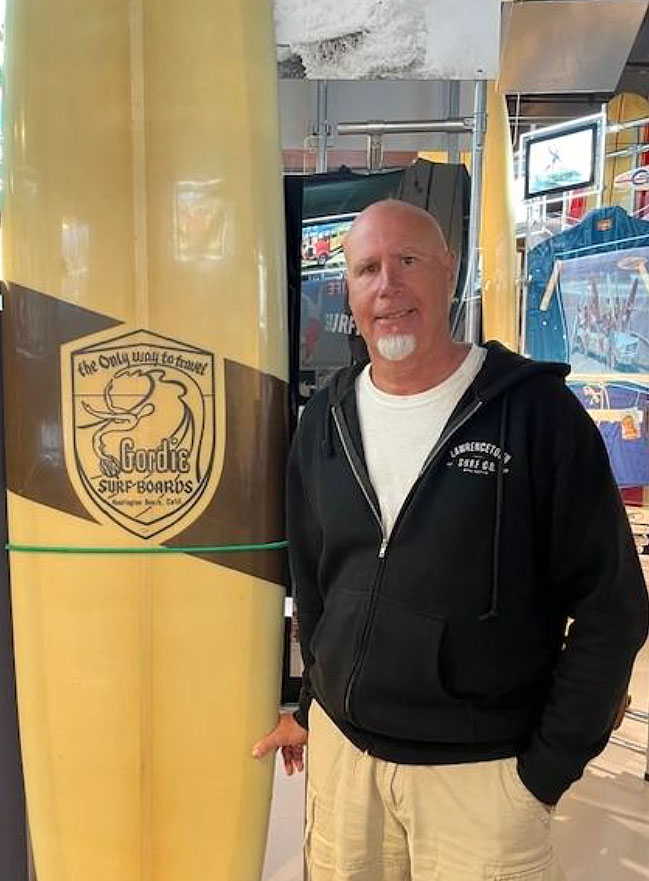
In 1985 after completing pilot training in the Canadian military, he motored across the country on a dream trip to the west coast, where he bought his first board and sampled as many California breaks as he could fit in. When it came time to pick a posting, he chose to fly Sea King helicopters at Canadian Forces Base Shearwater, NS, because it was close to the ocean. Surfers were still few and far between back then.
Vic ultimately built a home in Lawrencetown, a small surf town located just outside of Halifax. It is known as one of the great places to surf on Canada’s east coast. Great warm-water surf can arrive in August/September with the big swells that hurricane season brings, and the water can warm up to the 70s. But the most consistent surf is over the winter months when frigid Nor’easters drive in classic swells, in water temps that can dip down as low as 30 degrees.
“It is recognized that Lawrencetown Point is Nova Scotia’s equivalent to First Point Malibu. We refer to it as the Eastern Shore’s “golden ten kilometers.”” A quote by Jules Sabourin in Nordic Surfers Magazine

Photo Credit: ADAM CORNICK
Surfers take advantage of a big mid-winter swell at a rocky point break on the Eastern Shore of NS, late 1970’s. Below is a shot from the headland at Lawrencetown Beach, sometime in the late 1970’s. The surfing crew is gathered as usual in front of the old wooden break-wall (now long gone, due to erosion and rising sea levels) that was adjacent to “The Point,” NS’s premier surf break.
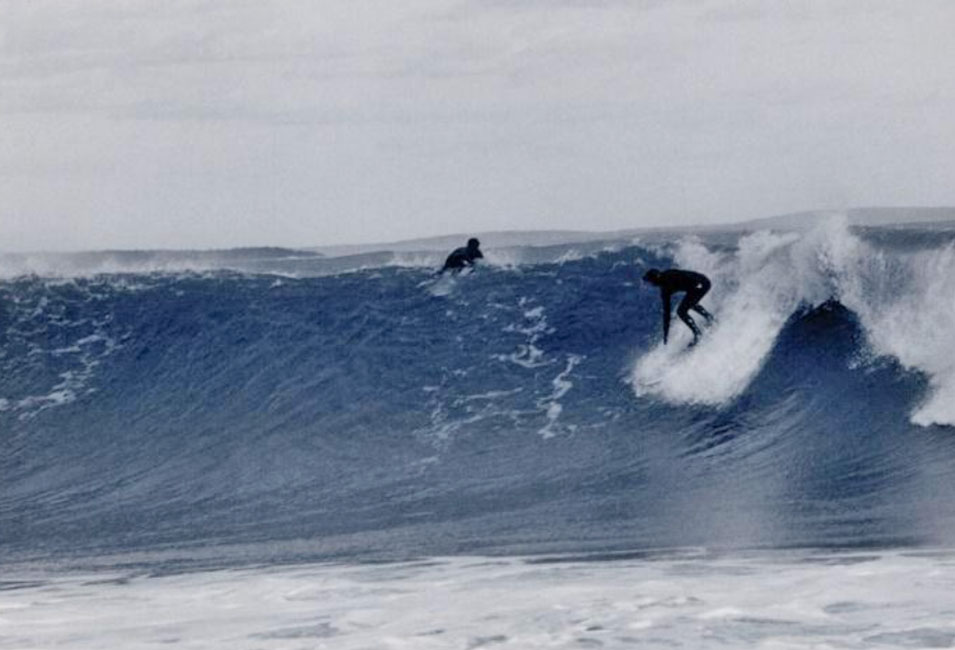
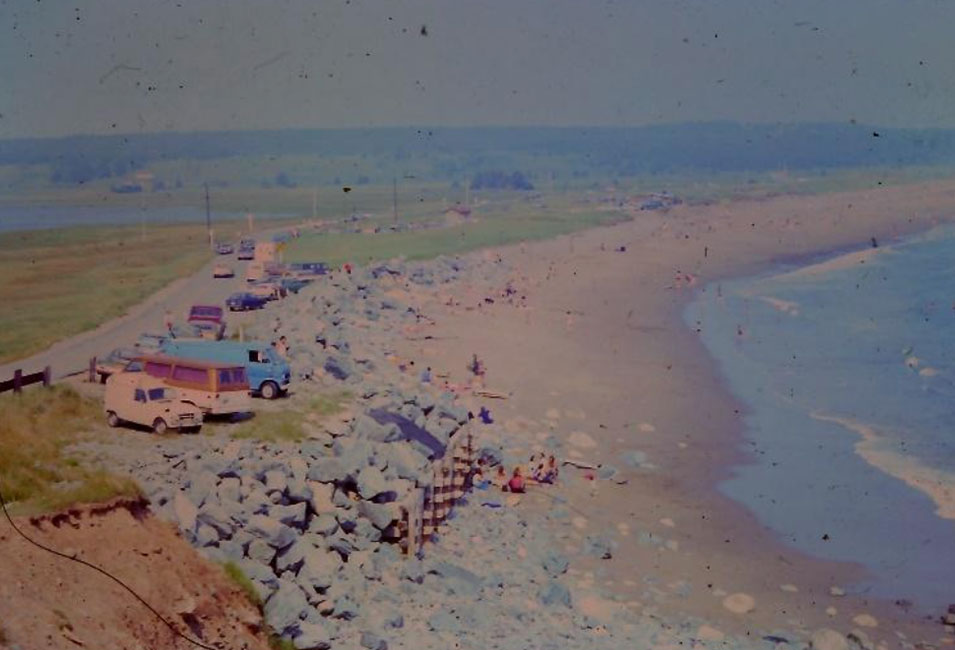
Brrr-rrrrr! Lawrencetown Point, winter of 1987: “This 1960 Pontiac Parisienne was my daily driver and surf transport back in the 1980’s. The board on the roof is my first surfboard – a mid-70’s, 7′-4″, Robert August single-fin that I purchased in Newport Beach, CA in 1985. The surf, as you can see, was very blown-out that day, but I was pretty darned keen back then, so I went out anyway!
In my first years, I surfed freezing waters in a 4.3 wetsuit, wearing a wool sweater underneath for extra warmth.”

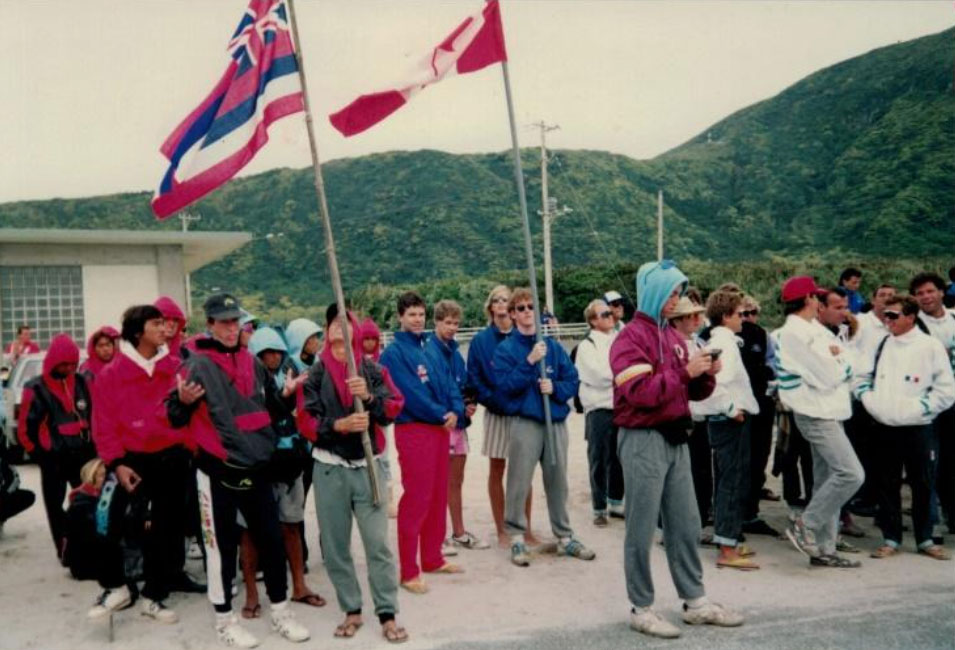
Here we have the newly minted Team Canada at the ISA Worlds in Japan in 1990. The Surfing Association of Nova Scotia was only 3 years old at the time, but a group of our members created the new Canadian Surfing Association in order to send a team to Japan to compete at the 1990 International Surfing Association (ISA) World Amateur Games. That’s all four members of Team Canada in the blue jackets: Rob Spicer, Toby Balch, Steve March and Glen Worth.
Snow and Surf – this photo was taken in the early 1990’s of “The Big Left” in Lawrencetown with a swell generated by a powerful mid-winter Nor’easter. Living up to its name, The Big Left holds a big swell when many other of our breaks are closed-out.
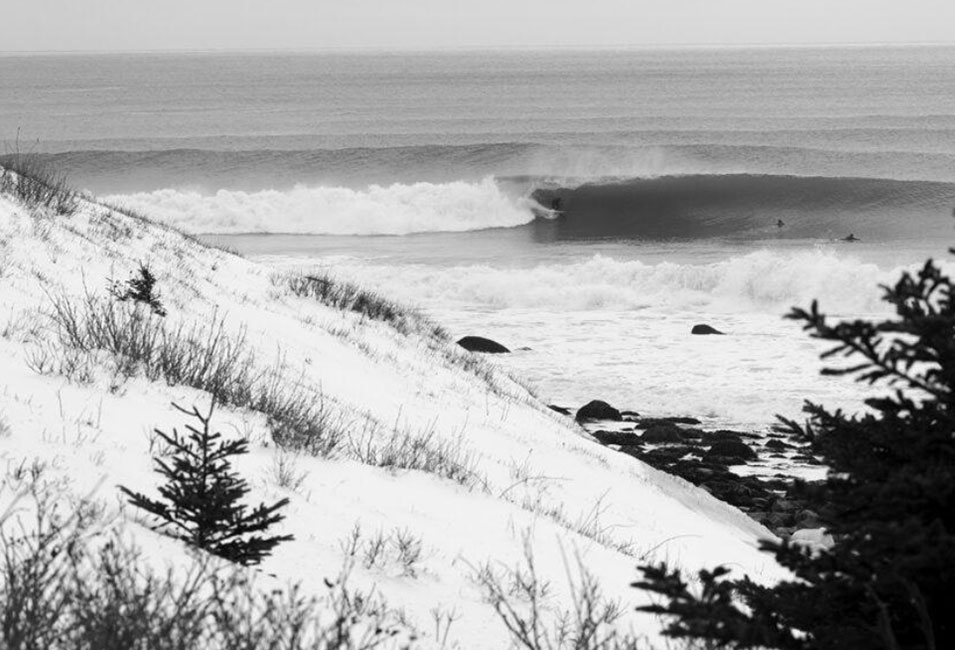
This 1970s line-up shows the first generation of Nova Scotia surfers posing for a group photo in front of the iconic old break-wall at Lawrencetown Point – the birthplace of surfing in NS. A few of these guys, who started out in the mid to late 1960’s with the Landymore boys, are still surfing today. Legend has it that in 1963 an American Navy Admiral gifted a surfboard to his Canadian counterpart, Admiral William Landymore. Landymore promptly gave the board to his two teenage sons, Rod and John – and John became one of the earliest, most highly-regarded surfers in Nova Scotia.
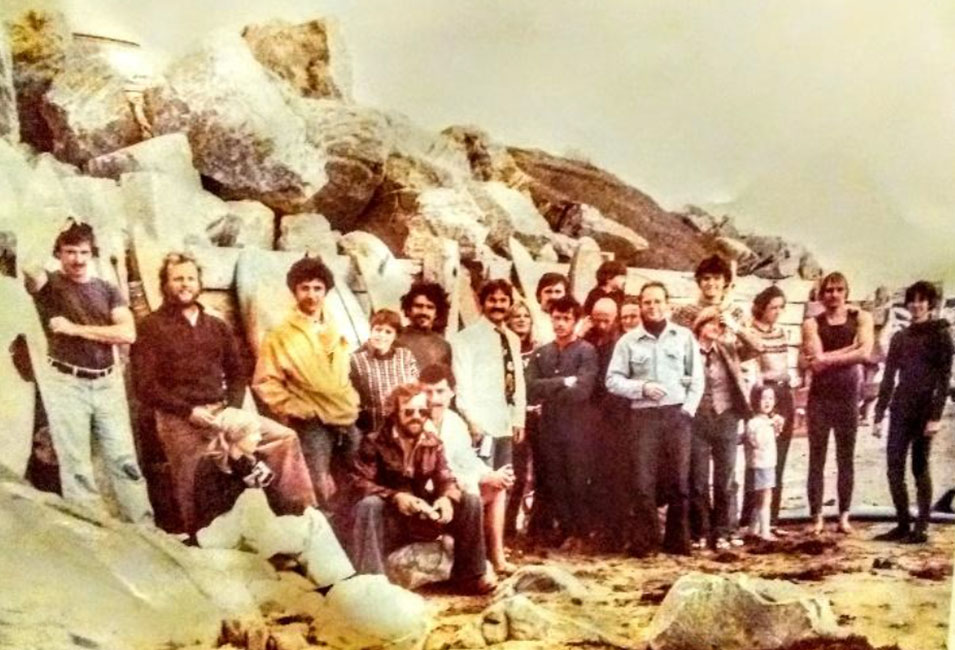
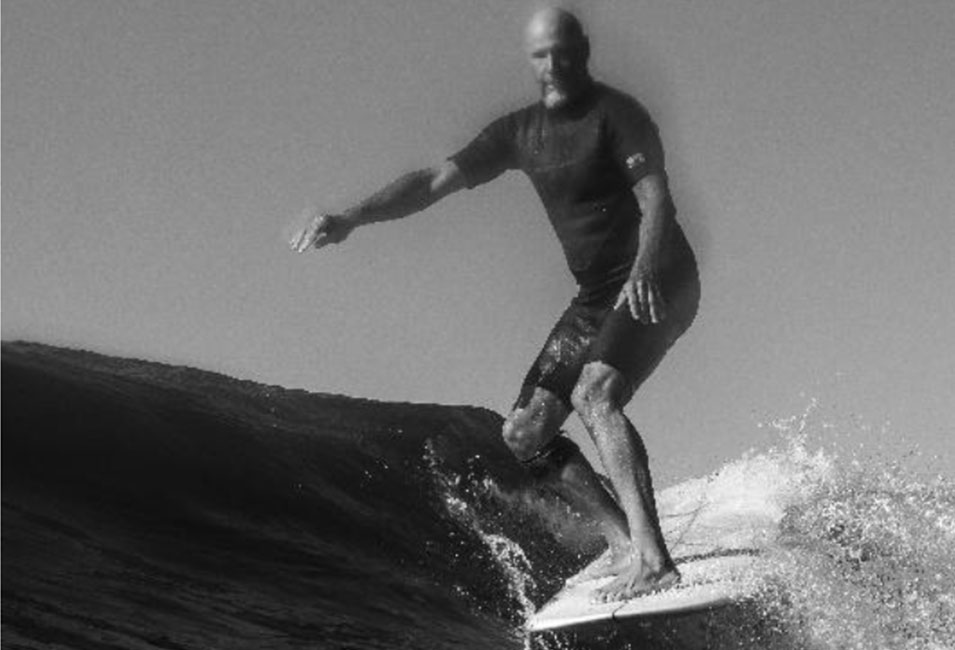
According to Vic: “Here I am on a perfect Nova Scotia summer morning with a glassy, knee to waist-high wave at “The Point” in Lawrencetown. I’m riding my favourite board, a 10-0 Julien single-fin, custom shaped for me by a talented local shaper, Kevin Julien. The water-photographer, Jill Cluet, captured a few of me that day, one of which even made it onto a calendar she published with her shots of local surfers.”
“I took this shot from my helicopter of a classic point break, one among many, somewhere along Nova Scotia’s unspoiled rocky shoreline.”
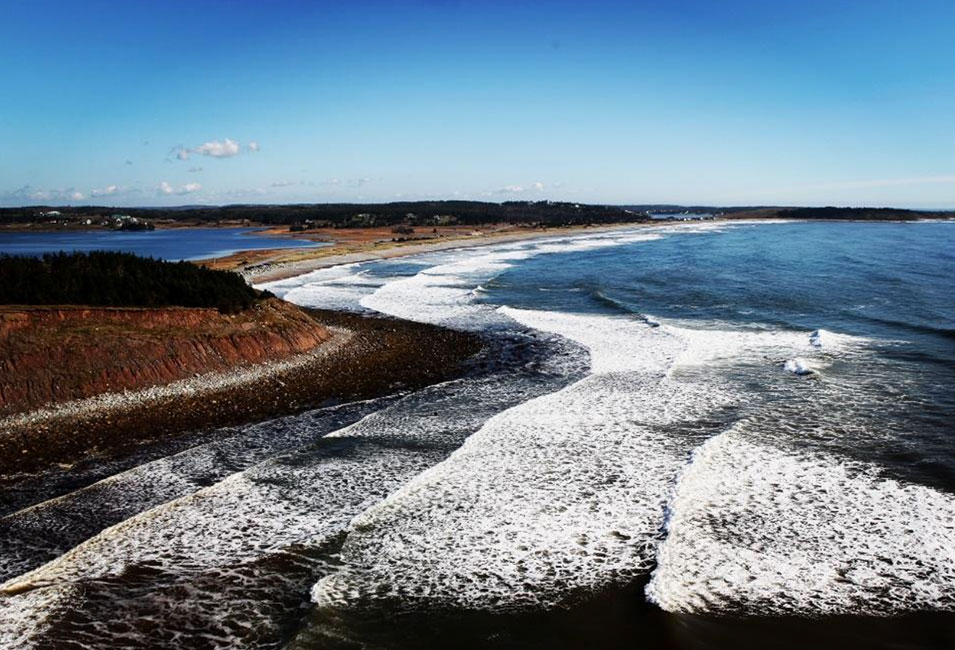
Vic mentioned that in 1985 there were no female surfers to be seen in his area, but now the women almost outnumber the men in the Lawrencetown Beach area. Vic and his wife Mary are very active in surf and beach activities there. They help organize contests, and Mary makes the trophies herself – she is a talented woodworker. Together they are interested in preserving what they have learned of Nova Scotia’s surf history, including recording older surfers’ memories and collecting photos and boards.
Mary and Vic on an outing to Joshua Tree National Park, 2025.
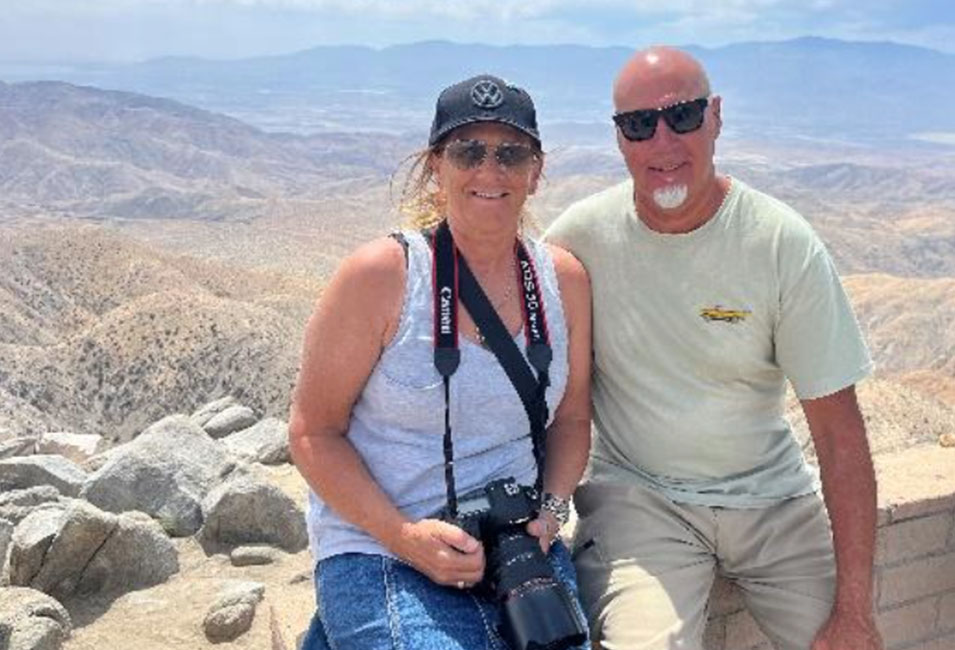
Read a story about surfing in Nova Scotia on Surflines website: https://www.surfline.com/travel/canada/nova-scotia-surfing-and-beaches/6091530

